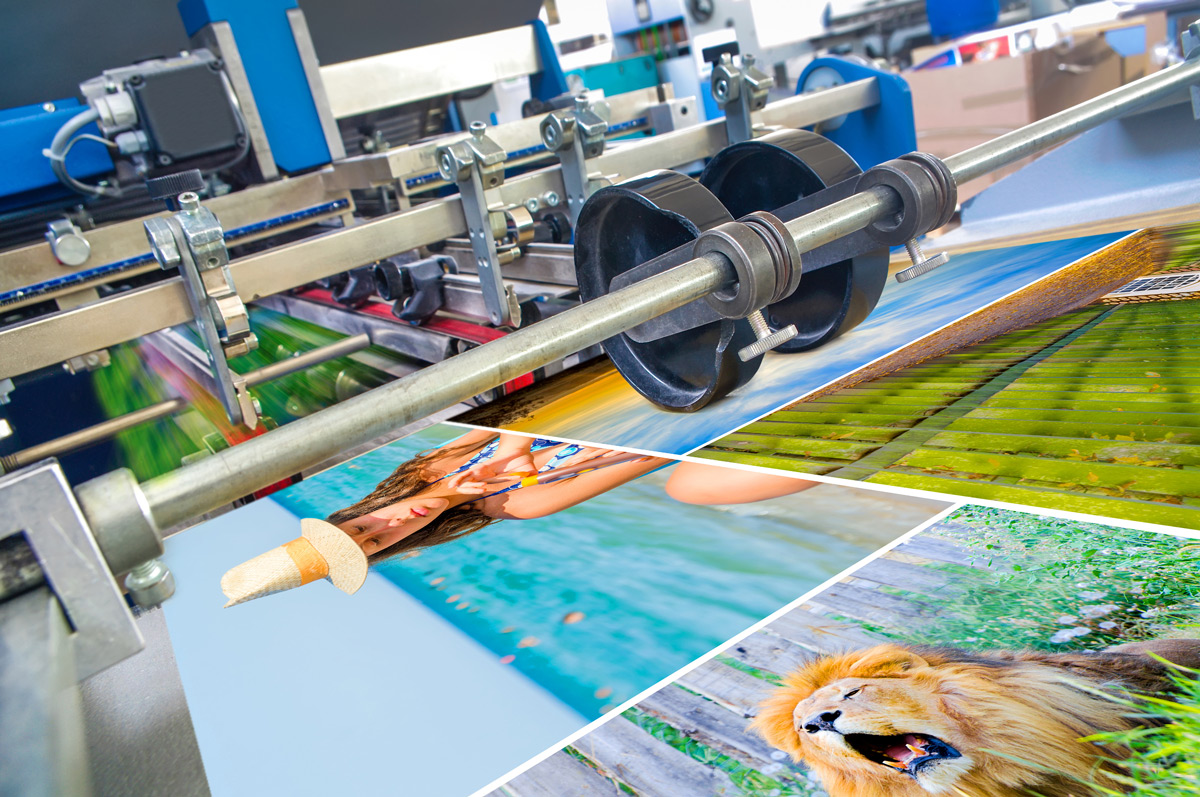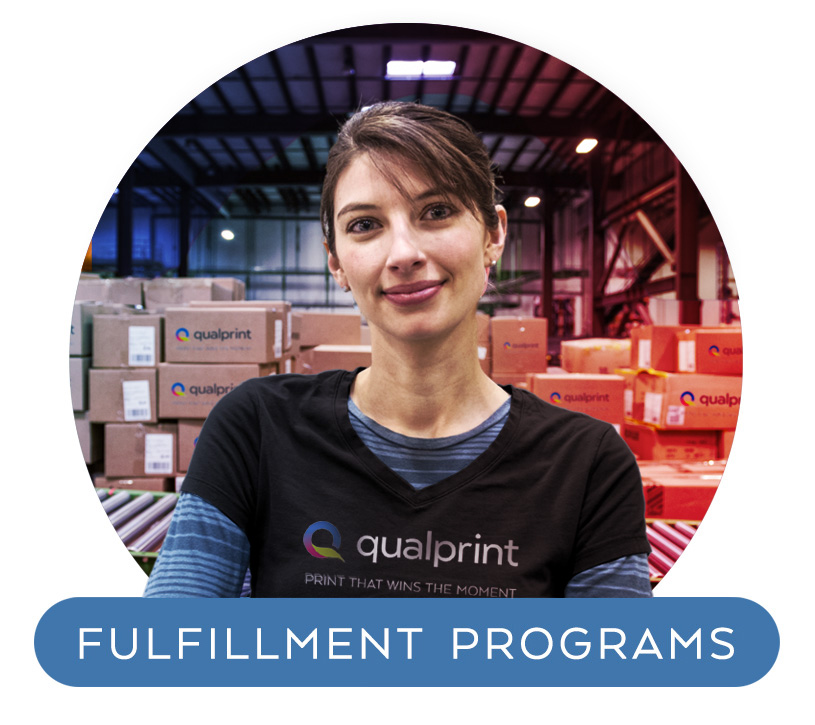Offset vs Digital Printing
The printing trade has evolved tremendously over the past 30 years and with that has come a lot of technological innovation. For hundreds of years offset printing was the standard, but as new technology became available we saw the emergence of digital printing which has dominated in the print space.
But what is the difference between offset printing and digital printing?
We share the answer to that question as well as other helpful information.
What is the Difference Between Offset Printing & Digital Printing
While there are some similarities between offset & digital printing there are some very distinct differences that we are going to call out here.
Printing Technique
Offset Printing: In offset printing, the ink is transferred from metal plates to a rubber blanket and then onto the printing surface, usually paper. It involves a process of indirect printing where the inked image is offset or transferred onto the paper.
Digital Printing: Digital printing involves the direct transfer of digital files onto the printing substrate using specialized printers. It does not require the use of printing plates or intermediate surfaces like rubber blankets.
Setup Process
Offset Printing: Offset printing requires extensive setup time and preparation. It involves creating printing plates, adjusting ink and water levels, and fine-tuning the press to achieve optimal print quality. The setup process can be time-consuming and is more suitable for large print runs.
Digital Printing: Digital printing eliminates the need for plate setup and complex adjustments. The digital file is directly sent to the printer, significantly reducing setup time. Digital printing is ideal for short print runs or on-demand printing due to its quick setup process.
Print Quality
Offset Printing: Offset printing is known for its high print quality, particularly for large print quantities. It offers sharp and detailed images with precise color reproduction, making it suitable for projects that require fine details, gradients, or complex color tones.
Digital Printing: Digital printing has advanced significantly and can now achieve excellent print quality. While it may not match the exact level of detail and color accuracy as offset printing for large runs, it still produces high-quality prints with sharp images and vibrant colors. Digital printing is particularly well-suited for short to medium print quantities.
Costs
Offset Printing: Offset printing is generally more cost-effective for large print quantities due to its lower cost per unit. The setup costs, including plate creation and press setup, are spread over a higher number of prints, reducing the overall cost per piece.
Digital Printing: Digital printing is cost-effective for short print runs or personalized printing because it eliminates the need for expensive plate setup. It offers cost advantages for smaller quantities, as there are no upfront plate costs, making it more suitable for on-demand or variable data printing.
Customization and Variable Data Printing (VDP)
Offset Printing: Offset printing does not readily support customization or variable data printing. Each print in a large run generally contains the same content and design, with limited room for personalization.
Digital Printing: Digital printing excels in customization and variable data printing capabilities. Each print can be personalized with unique text, images, or other content, allowing for targeted marketing, personalized packaging, or individualized materials.
Turnaround Time
Offset Printing: Offset printing may have a longer turnaround time due to the setup process and drying time required for the ink. Large print runs can take more time to complete, although the actual printing process is faster once the setup is done.
Digital Printing: Digital printing offers a quick turnaround time, as it does not require extensive setup or drying time. Prints can be produced rapidly, making digital printing ideal for projects with tight deadlines or short production timelines.
What is Offset Printing?
Offset printing, also known as offset lithography, is a commonly used printing technique for producing high-quality printed materials, such as newspapers, magazines, brochures, books, and packaging materials. It is called “offset” because the ink is not directly transferred from the printing plate to the paper but instead passes through an intermediate surface called a rubber blanket before reaching the paper.
The offset printing process involves several steps:
Prepress – This stage involves preparing the artwork or design for printing. It includes tasks like typesetting, image processing, color separation, and creating printing plates.
Plate making – The design is transferred onto metal plates (usually aluminum) through a photographic process. These plates have ink-receptive and ink-repellent areas corresponding to the image and non-image areas of the design.
Ink application – The printing plates are mounted onto cylinders on the printing press. The first cylinder applies ink to the plates, and the ink adheres only to the image areas.
Offset and transfer – The inked image is transferred from the plates to a rubber blanket cylinder. The rubber blanket cylinder receives the inked image from the plate cylinder and then transfers it to the paper, which passes between the blanket cylinder and a pressure cylinder. The rubber blanket acts as an intermediary, allowing the image to be offset or transferred onto the paper.
Drying and finishing – After the paper receives the inked image, it passes through a series of rollers to dry the ink and set it on the paper. Various finishing processes such as cutting, folding, and binding may be performed to complete the printed materials.
Advantages of Offset Printing
When it comes to offset printing you’ll find that there are quite a few advantages over other printing methods. We’ve outlined a number of the most prominent offset printing advantages here.
- High Quality
Offset printing produces sharp and clear images with high resolution. It can accurately reproduce fine details, gradients, and complex color tones, resulting in superior print quality compared to other printing methods. - Cost-effective for Large Quantities
Offset printing is particularly cost-effective for large print runs. Once the initial setup is done, the cost per unit decreases significantly with higher quantities. This makes it an economical choice for printing large quantities of newspapers, magazines, brochures, and other materials. - Versatility
Offset printing can be used on a wide variety of paper types, including coated, uncoated, textured, and specialty papers. It can handle various paper sizes and thicknesses, allowing for flexibility in design and print options. - Color Accuracy and Consistency
Offset printing utilizes Pantone Matching System (PMS) or spot colors, which allows for precise color matching. This is especially important for branding and ensuring consistent colors across different print materials and production runs. - Fast and Efficient Printing Speed
Offset presses can produce prints at high speeds, making them suitable for large-scale production. Once the printing plates are set up, the process can run smoothly and quickly. - Long Print Runs
Offset printing machines can handle long print runs without sacrificing quality or efficiency. They are designed for continuous operation, making them suitable for large-volume printing projects. - Ability to Apply Special Finishes
Offset printing allows for the application of various finishes, such as coatings (e.g., gloss or matte), varnishes, and embossing. These finishes can enhance the visual appeal of printed materials and provide added durability. - Compatibility with Other Processes
Offset printing can be easily combined with other finishing processes such as cutting, folding, binding, and laminating. This versatility makes it a preferred choice for producing complex printed materials that require multiple post-printing operations.
Overall, offset printing offers high-quality results, cost-effectiveness for large quantities, versatility in paper and color options, and compatibility with other processes, making it a widely used and reliable printing method.
What is Digital Printing?
Digital printing is a modern printing method that involves the direct transfer of digital files onto various substrates, such as paper, fabric, plastic, or metal, without the need for traditional printing plates. It is a versatile and rapidly evolving technology that has gained popularity in recent years due to its advantages in speed, flexibility, and cost-effectiveness for short to medium print runs.
Typically Digital Printing Includes…
File Preparation – The design or artwork is created or modified digitally using graphic design software. The file is prepared in a suitable format, such as PDF, TIFF, or JPEG, for compatibility with the digital printing equipment.
Printing Equipment – Digital printing utilizes specialized printers, such as laser printers or inkjet printers, designed for high-resolution and high-speed output. These printers are capable of directly processing digital files and translating them into printable images.
Image Transfer – The digital printer receives the digital file and transfers the image or text onto the printing substrate. In inkjet printing, microscopic droplets of ink are sprayed onto the substrate, while in laser printing, toner particles are fused onto the surface using heat.
Finishing – Once the image is transferred onto the substrate, various finishing processes may be applied to enhance the appearance or durability of the printed material. This can include trimming, binding, laminating, or applying coatings or varnishes.
Advantages of Digital Printing
Digital printing offers several advantages over traditional printing methods, making it a popular choice for many applications. Here are some of the key advantages of digital printing.
Quick Turnaround
Digital printing eliminates the need for time-consuming plate setup, making it faster than traditional printing methods. The digital file is directly sent to the printer, allowing for quick and efficient printing. This is particularly beneficial for projects with tight deadlines or last-minute changes.
Cost-Effective for Short Runs
Digital printing is cost-effective for small to medium print quantities. Unlike traditional printing methods that require the creation of printing plates, digital printing does not have plate setup costs. This makes it an economical option for short print runs or personalized printing where only a limited quantity is needed.
Variable Data Printing (VDP)
Digital printing enables variable data printing, allowing for customization and personalization of each printed piece. This is especially useful for direct mail campaigns, promotional materials, or personalized marketing materials. Variable data printing allows for unique text, images, or other content to be incorporated into each individual print, enhancing the effectiveness of targeted marketing.
High-Quality Output
Modern digital printers have advanced significantly in terms of print quality. They can produce high-resolution prints with sharp details, vibrant colors, and smooth gradients. Digital printing is capable of accurately reproducing complex designs and intricate artwork, resulting in professional-looking printed materials.
Design FlexibilityDigital printing provides design flexibility, allowing for quick modifications and adjustments to the artwork. Changes can be made easily on the digital file, eliminating the need to create new plates. This flexibility is especially advantageous for projects that require frequent design revisions or customization.
Reduced Waste
With digital printing, prints are produced on-demand, eliminating the need for large print runs and excess inventory. This reduces waste and storage costs associated with unused or outdated printed materials. It also allows for easy updates or reprints without the risk of obsolete inventory.
Proofing and Prototyping
Digital printing allows for cost-effective proofing and prototyping. Designers and marketers can produce a sample or prototype to assess the final printed product before full-scale production. This helps catch errors, ensure design accuracy, and improve customer satisfaction.
Substrate Compatibility: Digital printing is compatible with various substrates, including different paper stocks, textiles, plastics, and more. This versatility allows for printing on a wide range of materials, opening up possibilities for diverse applications such as brochures, business cards, banners, signage, labels, and more.
Overall, digital printing offers speed, cost-effectiveness for short runs, design flexibility, high-quality output, and the ability to customize each printed piece. These advantages make digital printing a preferred choice for many businesses and individuals, particularly for projects that require quick turnaround, personalized content, or frequent design modifications.
How to Choose Between Offset Printing & Digital Printing for Your Project?
The most effective way to choose which print method you should go with is to evaluate your goals, timeline, and budget. By pairing those with the information we’ve shared in this article you can make the best decision for your next project. There really is no “right” answer, only a choice that will make the most sense for you.
Our hope is that you are armed with enough information to understand what digital printing is and what offset printing is and which of the two will work best for your projects moving forward.
Contact us now
For more information and if you need assistance with printing and print marketing
Phone: (413) 442-4166
Blog Form
+ More Articles
Printing Technology Articles
More stories from Qualprint...
How Print Drives Foot Traffic to Brick & Mortar Locations
For stores with physical locations you need more customers walking in your doors. That foot traffic is critical to growth and providing an...
The Role of Print Collateral in Real Estate Marketing
When it comes to residential real estate marketing, physical printed marketing materials continue to deliver significant results. From...
Top Retail Marketing Strategies that Increase Sales
Have you ever wondered why some retail stores consistently draw customers and drive high sales while others struggle to stay afloat?...






